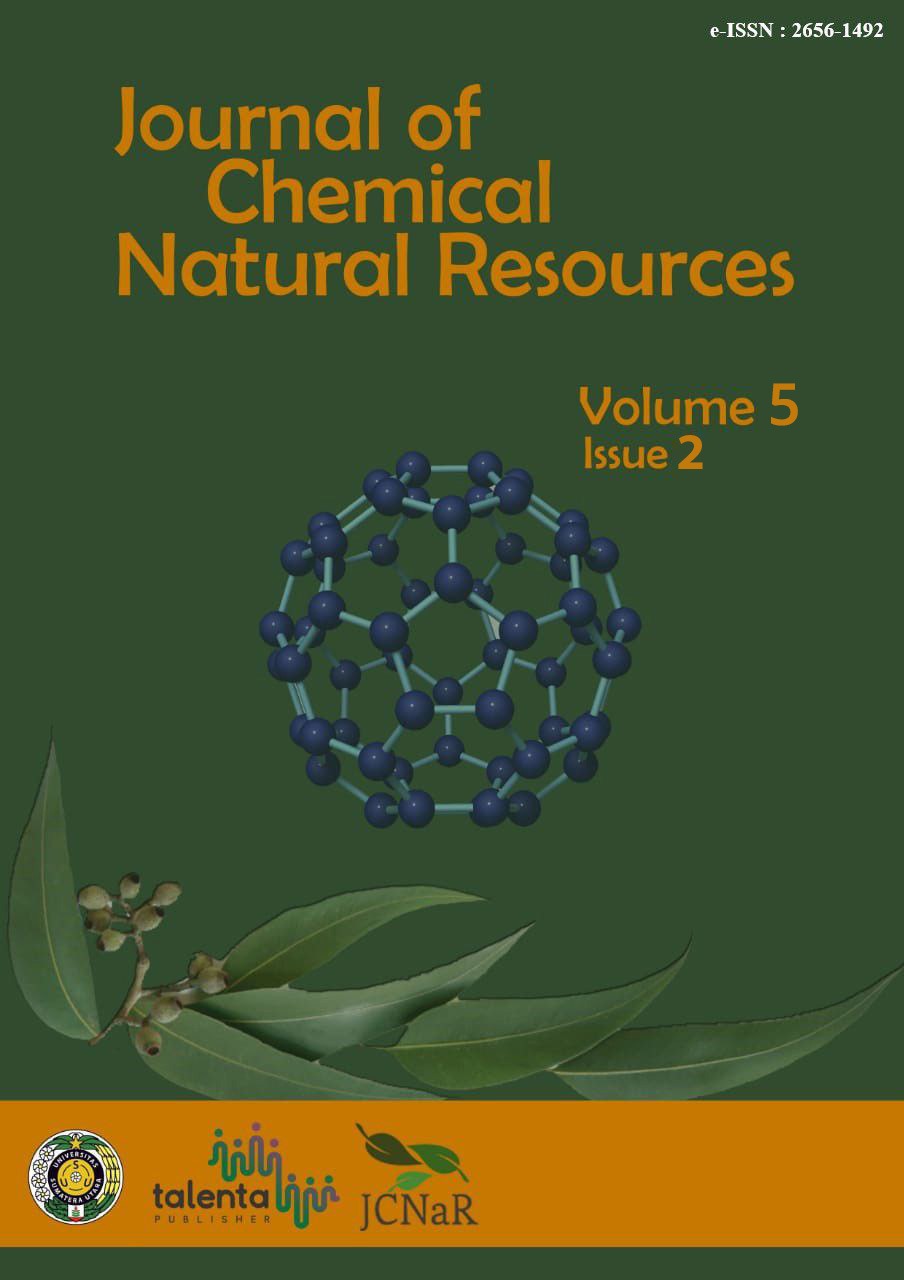Effectiveness of Cellulose Acetate Nanofiber from Banana Leaf Waste (Musa paradisiaca L.) as an Antibacterial Filter in Masks
DOI:
https://doi.org/10.32734/jcnar.v5i2.13477Keywords:
Antibacterial, Banana Stem, Cellulose, Mask Filter, NanofiberAbstract
The COVID-19 pandemic requires all people in Indonesia to comply with health protocols, from washing hands to wearing masks. Cloth masks are one of the masks that are widely used by the community. However, the public needs to pay attention to the rules of the cloth masks used. The purposes of this study were to produce an antibacterial filter on masks and to find out the effective and efficient processing of banana stems as an antibacterial filter on masks. Banana stems were chosen as the raw material because it is easy to obtain, has a cellulose content of ± 63%, and has antibacterial compounds in it. The stages of this research were sample preparation, phytochemical screening of banana stems, isolation of α-cellulose and synthesis of cellulose acetate from α-cellulose which were further characterized by using FTIR, manufacture of dop solution, manufacture of nanofiber membranes by electrospinning, and product application. The resulting product was then tested by pressure drop test, contact angle test, antibacterial activity test, SEM test, and porosity test. The test results showed that the resulting product was a nanofiber with a fiber diameter of ± 220.74075 nm, had antibacterial activity which was indicated by the formation of inhibition zone with a diameter of ± 14.8 mm in Escherichia coli and ± 9.8 mm in Staphylococcus. aureus, the filter is hydrophilic with an average contact angle of 60°. From the observations, it can be concluded that banana stems have the potential as an antibacterial filter on masks.
Downloads
References
Wolrd Health Organization, “Anjuran mengenai penggunaan masker dalam konteks COVID-19,†2020. https://www.who.int/docs/default-source/searo/indonesia/covid19/anjuran-mengenai-penggunaan-masker-dalam-konteks-covid-19-june-20.pdf (accessed Sep. 04, 2023).
AFNOR, “AFNOR Releases General Purpose Mask Standard,†2020. [Online]. Available: https://www.sgs.com/en/news/2020/04/safeguards-05020-afnor-releases-general-purpose-mask-standard
H. Sirruhu and V. A. Sulaiman, “Proses Produksi Pemanfataan Limbah,†vol. 7, no. September, pp. 205–214, 2020, doi: 10.2241/narada.2020.v7.i2.005.
D. J. K. Pertanian, “Buletin Konsumsi Pangan,†usat Data dan Sist. Inf. Pertan. Sekr. Jenderal Kementeri. Pertan., vol. 10, no. 1, 2020.
S. P. Kapadia, P. S. Pudakalkatti, and S. Shivanaikar, “Detection of antimicrobial activity of banana peel (Musa paradisiaca L.) on Porphyromonas gingivalis and Aggregatibacter actinomycetemcomitans: An in vitro study,†Contemp. Clin. Dent., vol. 6, no. 4, pp. 496–499, 2015, doi: 10.4103/0976-237X.169864.
J. Ahne, Q. Li, E. Croiset, and Z. Tan, “Electrospun cellulose acetate nanofibers for airborne nanoparticle filtration,†Text. Res. J., vol. 89, no. 15, pp. 3137–3149, 2019, doi: 10.1177/0040517518807440.
S. Gea, N. Panindia, A. F. Piliang, A. Sembiring, and Y. A. Hutapea, “All-cellulose composite isolated from oil palm empty fruit bunch,†J. Phys. Conf. Ser., vol. 1116, no. 4, 2018, doi: 10.1088/1742-6596/1116/4/042013.
M. A. Syarif, F. Fahma, and I. Sailah, “Bioplastic beads composite production based on cellulose acetate-starch blend: A literature study,†IOP Conf. Ser. Earth Environ. Sci., vol. 1063, no. 1, 2022, doi: 10.1088/1755-1315/1063/1/012015.
I. . Wenten, K. Khoiruddin, Aryanti, and A. . Hakim, Pengantar Teknologi Membran. Bandung: Institut Teknologi Bandung, 2015.
Holifah, Y. Ambari, A. Wahyu Ningsih, B. Sinaga, and I. Hanifa Nurrosyidah, “Antiseptic Effectiveness Of Hand Sanitizer Gel Of Kepok Banana Fruit (Musa paradisiaca L.) Ethanol Extract Against Staphylococcus aureus and Escherichia coli,†J. Ilm. Medicam., vol. 6, no. 2, pp. 2356–4814, 2020.
Monalisa, Aruna, P. K. Bhat, K. Manjutnath, E. Hemavathy, and D. Varsad, “Microbial Contamination of the Mouth Masks Used By Post-Graduate Students in a Private Dental Institution: An In-Vitro Study,†IOSR J. Dent. Med. Sci. e-ISSN, vol. 16, no. 5, pp. 61–67, 2017, doi: 10.9790/0853-1605046167.

Downloads
Published
Issue
Section
License
Copyright (c) 2023 Journal of Chemical Natural Resources

This work is licensed under a Creative Commons Attribution-ShareAlike 4.0 International License.














